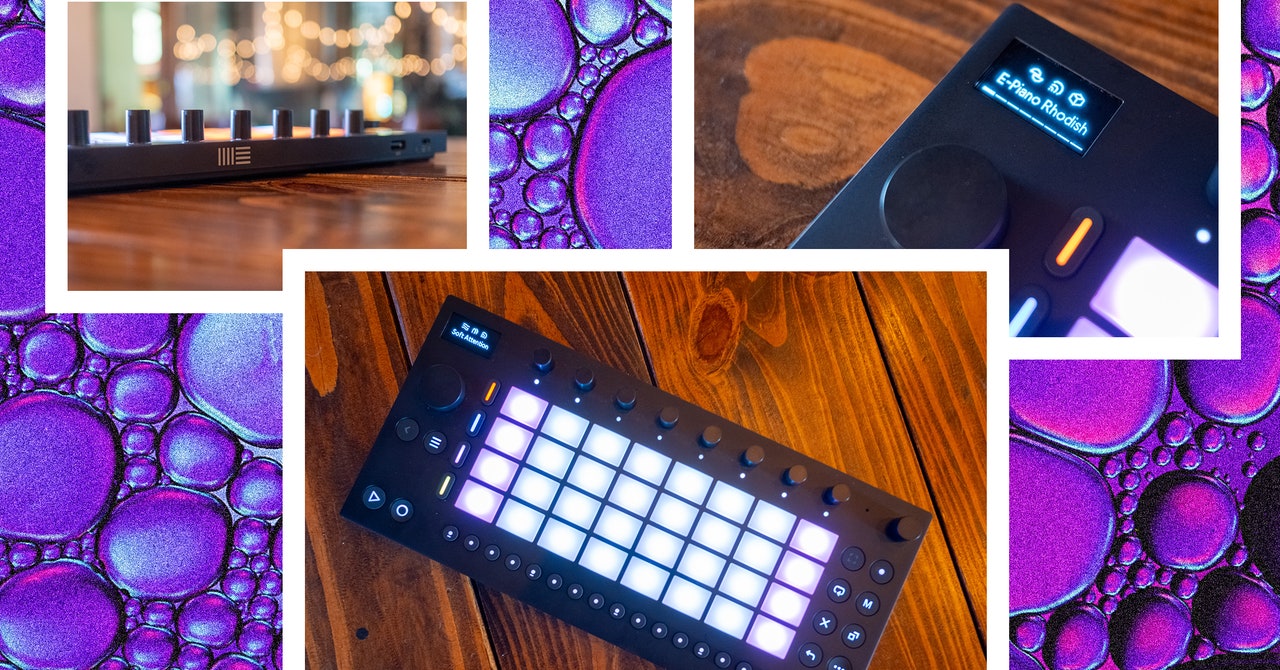Drum Rack has its limitations, too. Pads have to use the new Drum Sampler, instead of Simpler, and they can’t have individual effects chains. Instead any effects need to apply to the entire Drum Rack.
Your effect selection is pretty decent. There are eight in total: reverb, delay, saturator, redux, chorus-ensemble, phaser-flanger, channel EQ and dynamics (combo EQ and compressor). Each track can have two effects, plus there are two master effects
Connectivity is limited, but not overly so. There’s 3.5-mm audio in and outs plus a USB-A port for connecting an external MIDI controller if you prefer a keyboard to pads, and a USB-C port for charging that also allows you to use the Move as controller and audio interface with Live.
Perhaps most importantly, the Move connects to Wi-Fi, which is how you get software updates and manage sets, samples, and presets (Drift and Drum Rack only for the moment). It also allows you to backup sets to Ableton Cloud and sync tempo with instruments, DAWs and VSTs that support Ableton Sync.
A Decent Controller
While Ableton is primarily pitching Move as a stand-alone device, it can also serve as a MIDI controller. While it’s not nearly as full-featured as Push, Move still has a ton of Live-specific features that should make it appealing to anyone using that DAW. For one, mapping of pads and encoders is all automatic for Ableton’s first-party plug-ins.
You can’t use it to do fine-tuned editing of MIDI or to browse presets, but basic recording, looping and triggering of clips is all supported. As is Capture MIDI, which is great for when you forget to hit record or are just noodling around and stumble on something you like. This takes the last bunch of notes you played and dumps them into a clip.
Photograph: Terrence O’Brien


-Reviewer-Photo-SOURCE-Terrence-O'Brien.jpg)